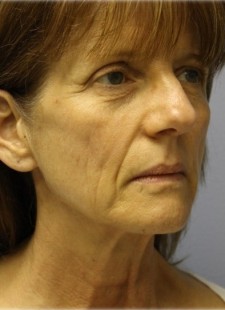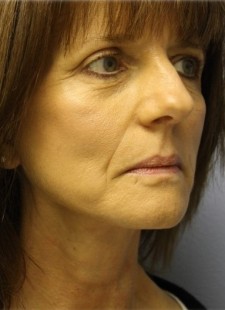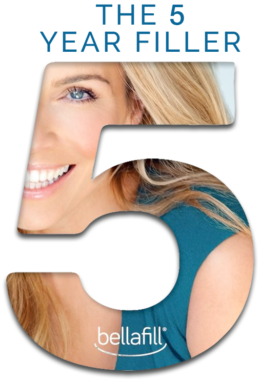Fat Grafting
We lose bone, muscle and fat from our face as we age. As that underlying support shrinks, the texture in our skin also changes. This is when the contour of our face really changes. Fat grafting (or fat transfer) is an exciting development in facial rejuvenation and highly effective in filling and softening deep facial lines, nasolabial folds, and sunken eyes.
Since most patients require some sort of “fill” to achieve natural results in a facial rejuvenation procedure, fat is both a natural and readily-available resource in the patient’s own body. Additionally, fat transfer causes no allergic reactions, as the filler is your own fat – there is no risk that the fat filler tissue will trigger a reaction in the body.
The Fat Grafting Procedure
The fat grafting process is simple: after preparing the donor area (abdomen, thighs, or buttocks) for fat removal with a local anesthetic, Dr. Vargas will withdraw the donor fat with a syringe, process it and then inject the filler into the area of the face with micro-injections. Dr. Vargas performs fat transfer procedures in the in-suite laser room or can combine this with other procedures in a surgery center. The entire procedure can be completed in about an hour. This fat transfer process will be repeated until the desired effect has been achieved.
The Benefits of Fat Grafting
Fat grafting patients typically see a drastic improvement and a whole swath of benefits as opposed to a filler procedure:
- Natural. This procedure comes from your own body and reduces chance of infection/allergy.
- Long-lasting. A portion of your fat may remain there permanently. Fillers generally only last six months to one year.
- All-over fill. A natural fill like fat grafting is one that improves the whole face 20% at a time. Fillers tend to aim for 75% in one area only.
- Skin Improvement. Anecdotal reports have patients raving about their skin improvement after fat grafting. Although not well understood, many physicians feel the transfer of stem cells with fat result in a refreshed, dewy change to the skin.
Are You A Candidate for Fat Grafting?
Fat grafting is not for everyone, but generally the ideal fat grafting candidate in one who:
- Wishes to improve the contour of the face by diminishing lines
- Wants to reduce the appearance of wrinkles, creases, furrows
- Has “marionette lines” or deep depressions in the face
- Has excess fat in other areas of the body
Your Consultation
During your initial fat grafting consultation with Dr. Vargas, you will receive an examination of the areas that would benefit from fat grafting. Measurements, photos and notes may be taken at this time.


“I was so tired of looking at the deep wrinkles on my face. My cheeks are so much fuller now! I love it!”
Fat Grafting Q&A
As we age we lose bone, muscle, and fat. This loss in volume causes the face to lose its structure. The volume that remains is now falling downward. Fat grafting or cosmetic fillers is most often thought of as a way to make one area of the face bigger. In fat grafting, the goal is to inject areas of hollowness and gain back volume that has been lost with aging.
Fat grafting is not meant to treat fine lines, but to restore volume loss to the face. It will help areas of droopiness that cause wrinkles. Fine lines such as those around the eyes and mouth are better filled with a very thin injectable product like Restylane Silk. Resurfacing can also help to improve fine lines.
The fat can be placed in most areas of the face. Lips and nose are the few areas that cannot be injected.
Fat grafting can help with the texture and tone of the skin due to a stem-cell response in the areas where fat was transplanted. This is more of a speculation as to why we see this improvement in the skin. Adding volume to the face brings more light, which makes the skin look more radiant. These improvements are bonuses of fat grafting.
No, the removal is not to the same level as liposuction. Patients can sometimes notice a slight difference in the fit of their clothing, but it is not very significant.
Yes, but this is not a procedure that Dr. Vargas provides. We specialize in facial plastics, so our fat grafting is specifically used for the face.
Yes, there are other procedures that can correct hollowness of the face. The most comparable procedure to fat grafting is BellaFill. BellaFill is a semi- permanent solution that you can do over time and build on your results each treatment. Another option is temporary fillers, which usually last six months to a year. Temporary fillers are usually best for spot treatment since the cost would be higher to complete the entire face.
There are many facial cosmetic procedures that can be performed at once. Fat grafting fits very well with most of the other cosmetic facial procedures. It is very common to add fat grafting with the QuickLift and blepharoplasty. Patients will often add on liposuction to the area in which the fat is being removed for greater reduction of fat.
The procedure can be performed under twilight sedation and in the office with a sedative. It is considered a minimally invasive procedure. Very small incisions are made at the donor site (which is predetermined.) Fat is removed through a gentle hand-harvesting method. The fat is purified and placed into syringes for facial injection. Once enough high quality fat is removed the harvesting portion comes to an end. Sutures are generally not placed since the incisions are minimal, but may be placed in areas of tension.
Next, entry points are made on the face with a needle. Cannulas are used to inject the prepared fat into areas of volume loss such as around the eyes, cheeks, and jawline. The procedure comes to an end once the desired result is achieved.
Swelling and bruising is normal post procedure, in many cases this resolves within 10 days, but can last up to two weeks. Patients can expect to be overfilled since some of the fat will be reabsorbed by the body.
Cold compresses can be used to help with swelling and bruising. Pain medication is prescribed and can be used to aid in comfort levels post-procedure, most patients opt for Tylenol. It is important to try and keep a steady weight post produce for successful results.
Any procedure that addresses cosmetic needs is not usually covered by insurance. Special cases such as trauma may be reimbursable in part or whole. It is the patient’s responsibility for pre-approval of coverage and to process the claim for insurance.




